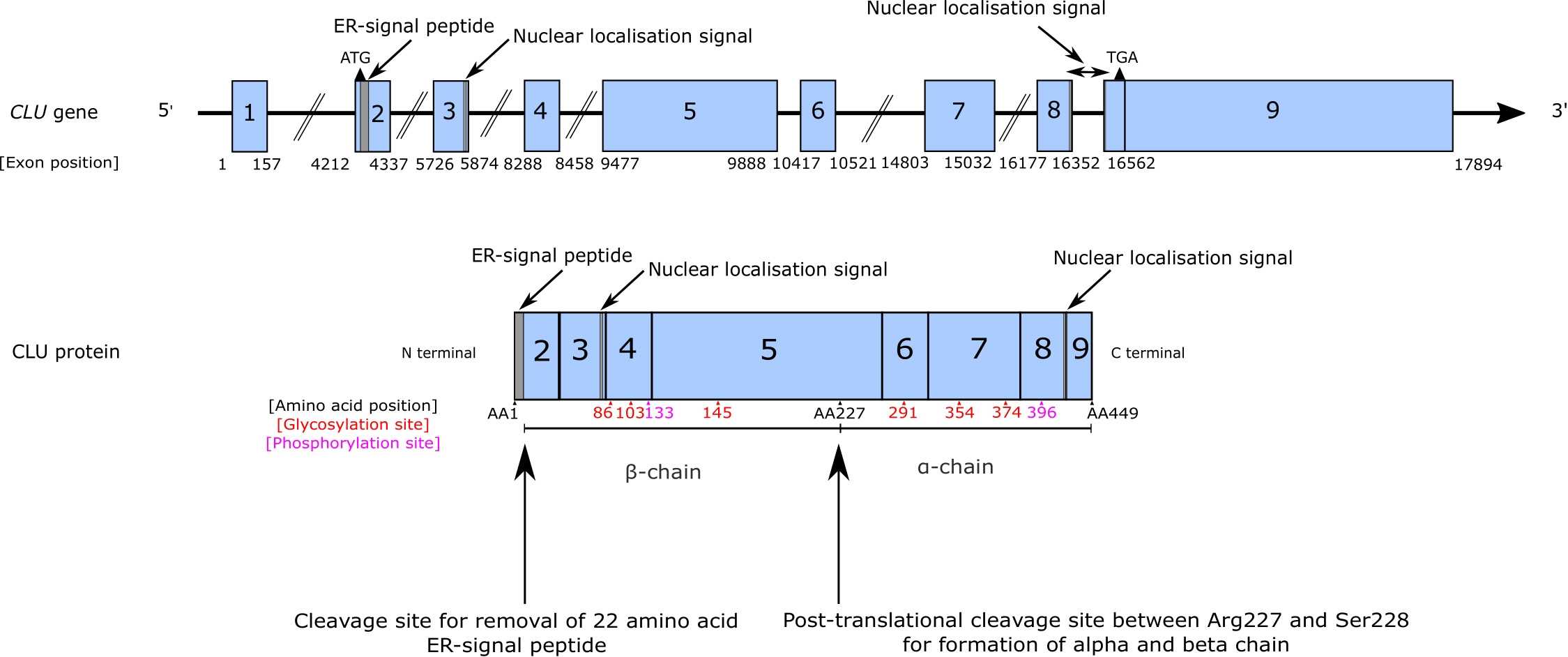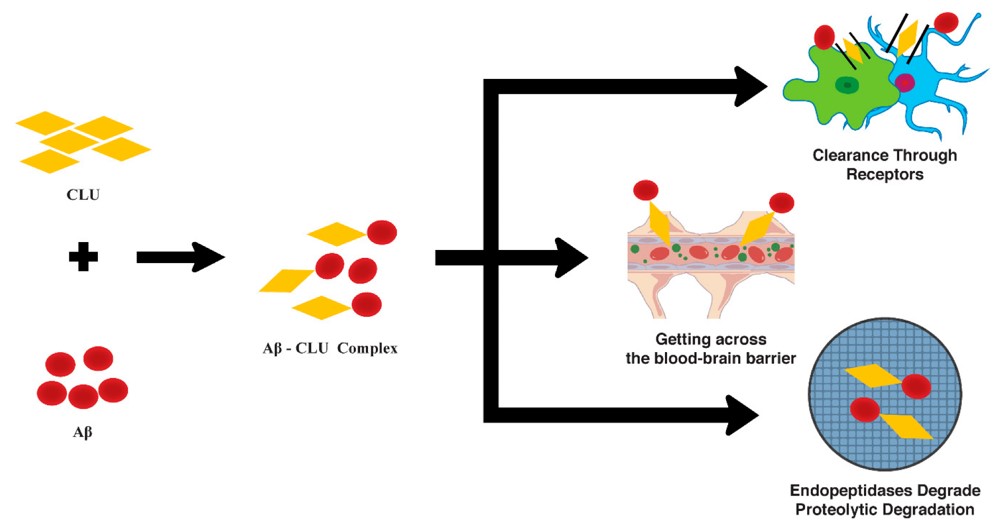Product List Background Clusterin Functional Service
Background
Clusterin (CLU), a predominantly secreted glycoprotein, is composed of two chains: α-clusterin (α-Clu) and β-clusterin (β-Clu), and they are linked by disulfide bonds. CLU is expressed in a variety of tissues and is present in the extracellular space and several body fluids. There are different proteoforms of CLU, and mutations in the protein might cause its altered localization and functions in the cell. After discovered as a cell-aggregating factor found in ram testis fluid, many roles have been ascribed to clusterin, including lipid transport, regulation, complement inhibition, cell differentiation, regulation of inflammation, appetite, apoptosis, as well as protein quality control in the extracellular space. Besides, CLU has been displayed to display chaperone-like activity and exhibit the chemically-induced and heat-induced amorphous aggregation.
Until now, the exact role of CLU in several conditions is indistinct, however, it is associated with neurodegenerative disorders such as several cancers, Alzheimer’s, chronic inflammatory disorders, and autoimmune disorders. Importantly, CLU has been identified as a biomarker of Alzheimer’s disease in a range of genome-wide association studies. In addition, CLU was demonstrated to modulate the activity of leptin and act as an anorexigenic molecule in animals. It has also been proven to bind to promoter regions of Sterol Regulatory Element Binding Protein-1C (SREBP-1C), which is a master regulator of several lipid metabolic pathways and controlling its expression and suppressing hepatic lipid accumulation.
 Fig.1 Structure of CLU.1, 3
Fig.1 Structure of CLU.1, 3
Clusterin Functional Service
Creative Biolabs provides a comprehensive range of Clusterin-related products, encompassing anti-Clusterin monoclonal/polyclonal Antibodies, Clusterin ELISA Assay Kits, recombinant Clusterin Proteins, Clusterin Peptides and Clusterin Lysates. Our offerings support accurate detection, quantification, and functional assessment of CLU in various biological systems, thus aiding in high-quality research in areas such as protein function analysis, cellular stress response, neurodegenerative diseases, and cancer biology.
 Fig.2 The effects of CLU on Aβ clearance in Alzheimer’s disease.2,3
Fig.2 The effects of CLU on Aβ clearance in Alzheimer’s disease.2,3
CLU functional testing plays a crucial role in understanding the biological functions and pathological roles of CLU in diseases such as Alzheimer's, cancer, and cardiovascular conditions. CLU functional testing often involves ELISA assays to quantify CLU protein levels in various samples, such as serum, plasma, and tissue lysates. Our products are essential components of these assays. Through methods like ELISA, researchers can measure CLU levels in biological samples, assess its interactions with other proteins, and explore its role in cell survival, apoptosis, and stress response pathways.
Studies have utilized CLU functional testing to show that elevated CLU expression is linked to neuroprotective functions in Alzheimer’s disease, while its reduced levels correlate with poor prognosis in certain cancers. Using ELISA assays and recombinant proteins, we have validated CLU’s role as a potential biomarker and therapeutic target. These findings enhance our comprehension of its involvement in disease progression and therapeutic outcomes.
Creative Biolabs provides CLU-functional services, including functional assays, biomarker analysis, and drug efficacy analysis, empowering researchers to delve deeper into the complex biology of CLU. With high-quality products and tailored research support, we offer an efficient and reliable approach to functional CLU analysis.
References
-
Foster, Evangeline M., et al. "Clusterin in Alzheimer’s disease: mechanisms, genetics, and lessons from other pathologies." Frontiers in neuroscience 13 (2019): 164.
-
Fareed, Muhammad Mazhar, et al. "The role of clusterin transporter in the pathogenesis of Alzheimer’s disease at the blood–brain barrier interface: a systematic review." Biomolecules 12.10 (2022): 1452.
-
Distributed under Open Access license CC BY 4.0, without modification.


 Datasheet
Datasheet Fig.1 Structure of CLU.1, 3
Fig.1 Structure of CLU.1, 3
 Fig.2 The effects of CLU on Aβ clearance in Alzheimer’s disease.2,3
Fig.2 The effects of CLU on Aβ clearance in Alzheimer’s disease.2,3
